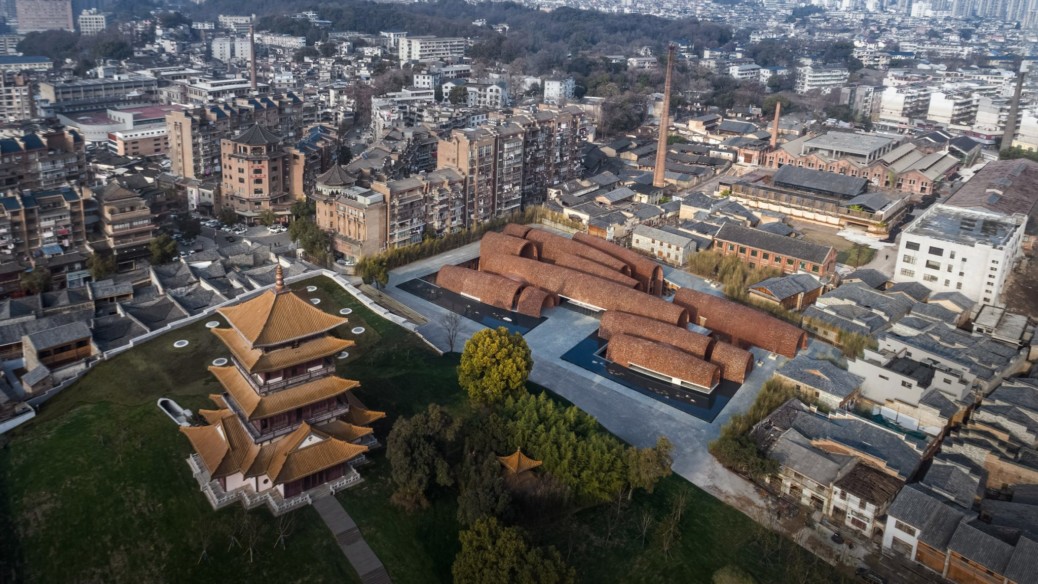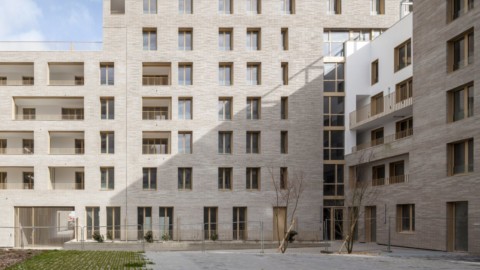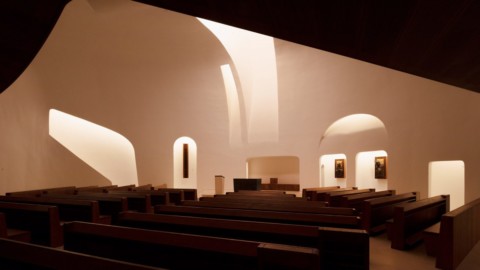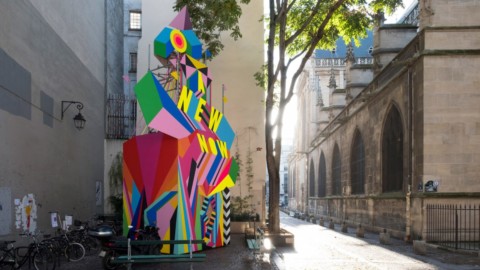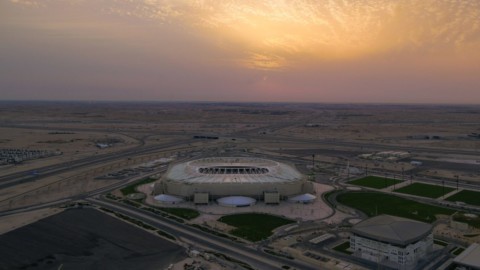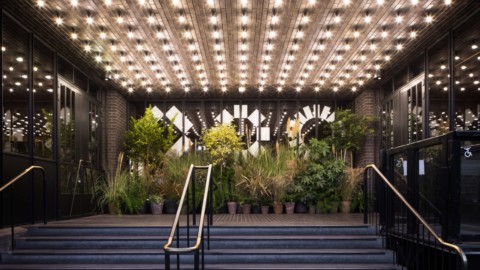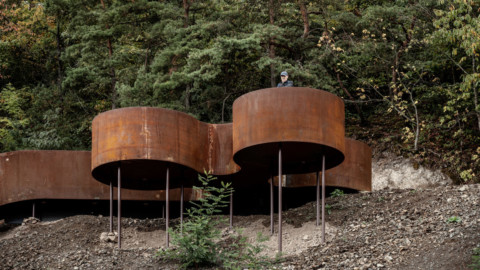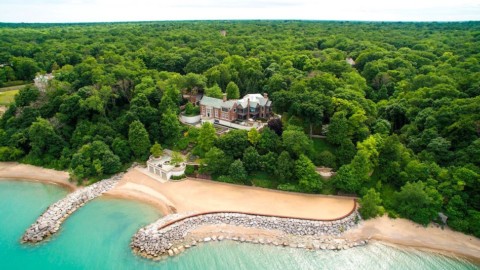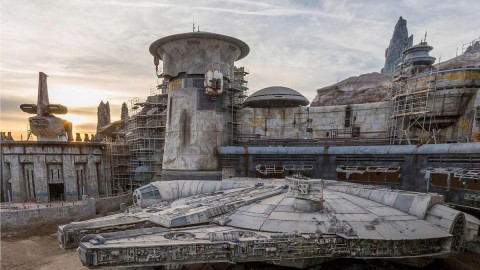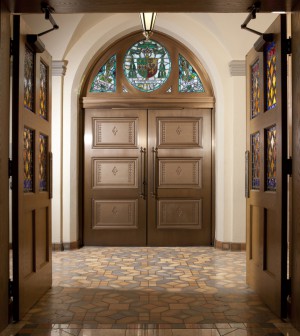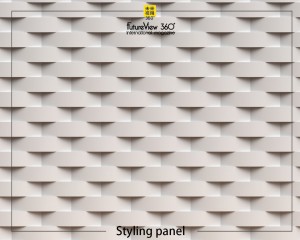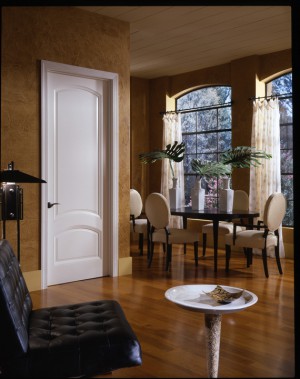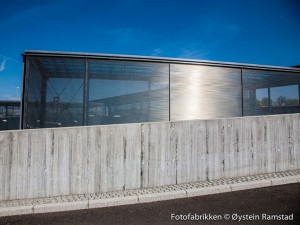Studio Zhu-Pei housed galleries within vaulted red-brick structures to create the Jingdezhen Imperial Kiln Museum in Jiangxi province, China.
Located in the city of Jingdezhen, the museum’s sweeping structures each have a unique size, curvature and length, designed by Studio Zhu-Pei to recall the forms of traditional brick kilns.
朱-工作室在拱形的紅磚建築中安置了畫廊,以創建中國江西省景德鎮御窯博物館。
博物館的清掃結構位於景德鎮市,每個結構都有獨特的大小,曲率和長度,由朱培工作室設計,以喚回傳統磚窯的形式。
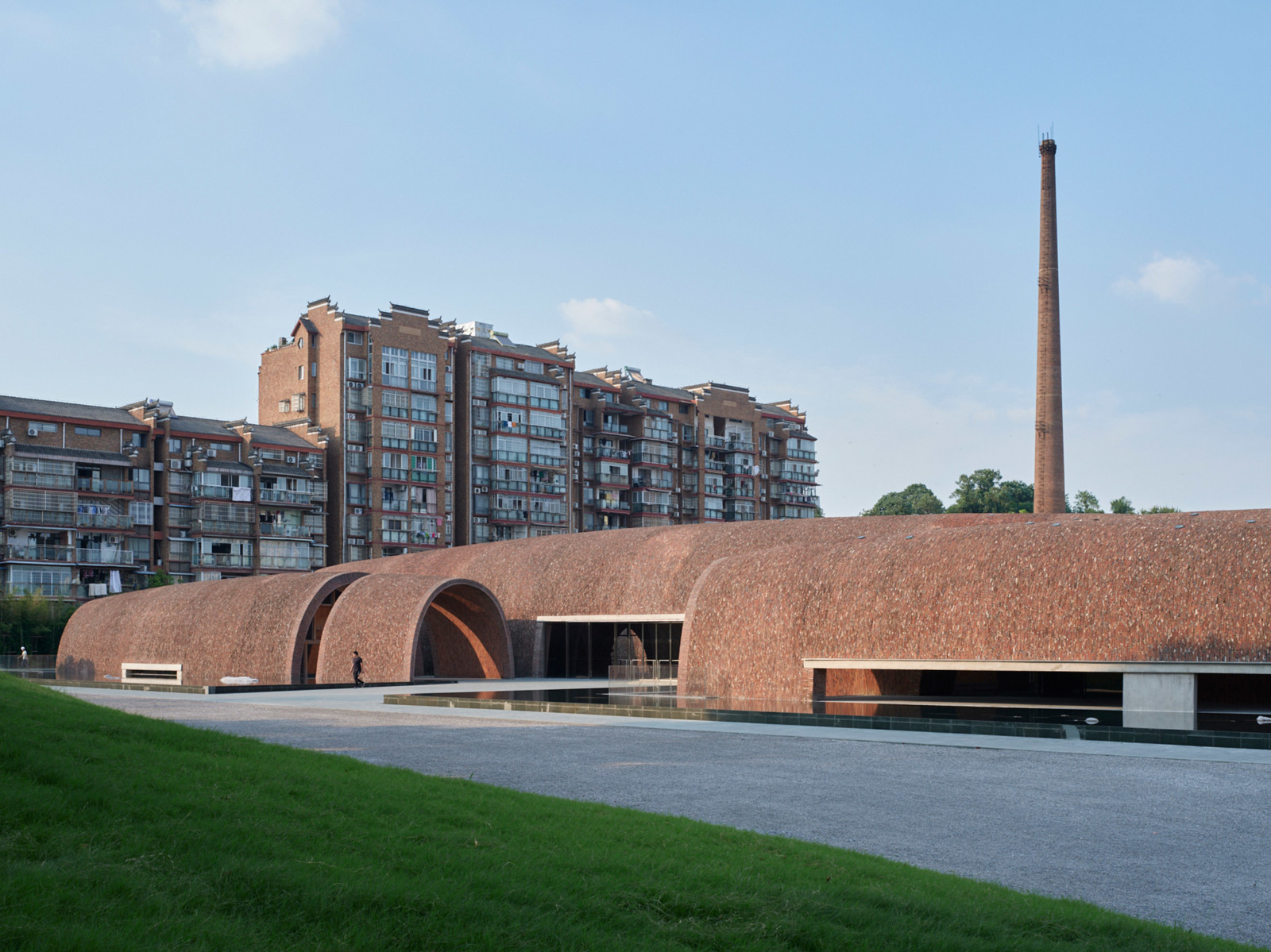
Both Jingdezhen Imperial Kiln Museum’s design and contents pay homage to the city’s history of making ceramics, for which it has been dubbed as the world’s “porcelain capital”.
It is positioned adjacent to some of the city’s imperial kiln ruins, which date back to the Ming Dynasty and were once used to produce porcelain for the imperial family.
景德鎮御窯博物館的設計和內容均向這座城市的製陶歷史致敬,該博物館被譽為世界“瓷都”。
它位於城市的一些窯窯遺址附近,該遺址可以追溯到明代,曾被用來為皇室生產瓷器。
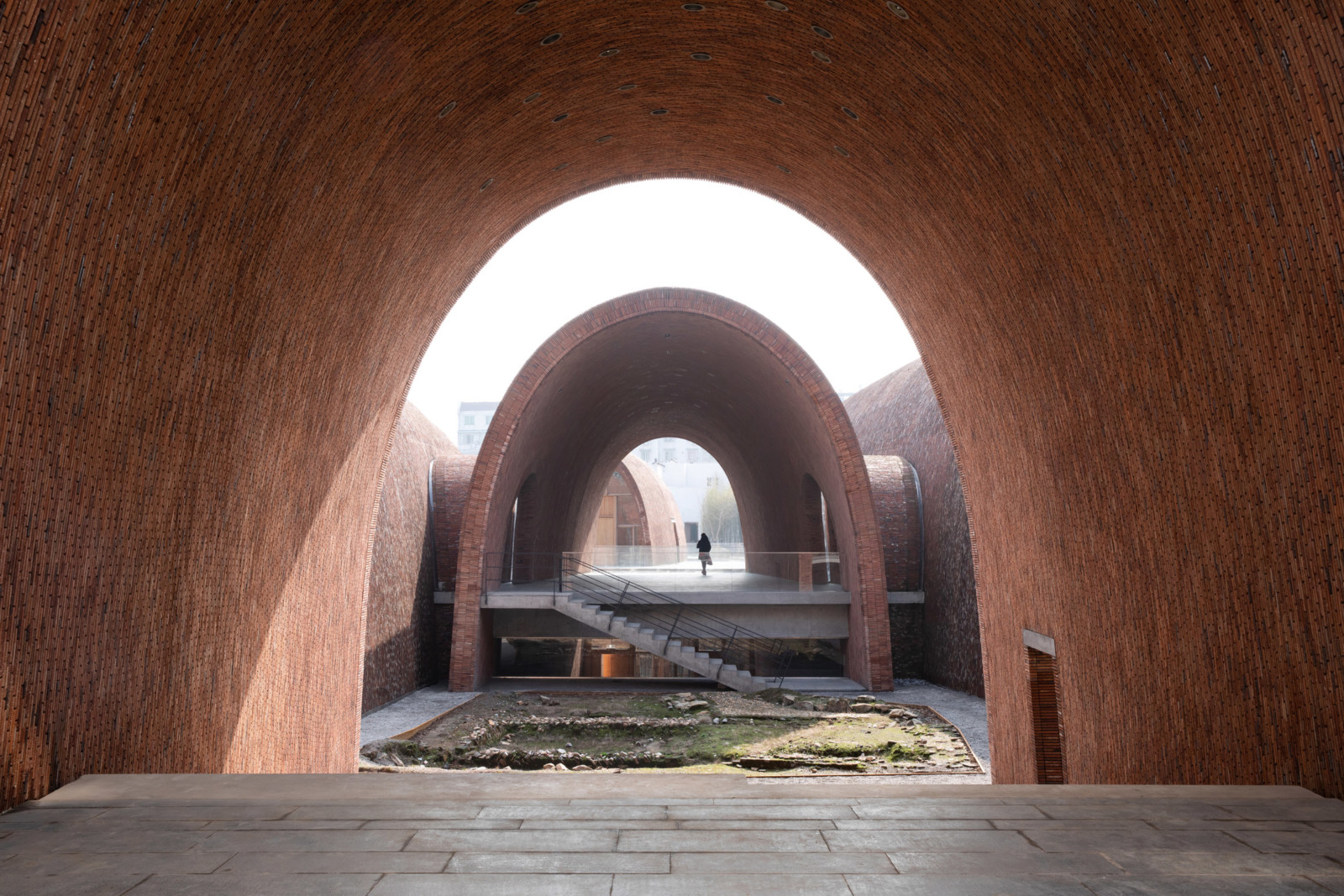
“Jingdezhen is known as the porcelain capital of the world because it has been producing pottery for 1,700 years,” explained the Beijing studio.
“The overall experience of the museum tries to rediscover the roots of Jingdezhen, to recreate the past experience among kilns, porcelain, and human beings.”
北京工作室解釋說:“景德鎮被譽為世界瓷都,因為它生產陶器已有1700多年的歷史。”
“博物館的整體經驗試圖重新發現景德鎮的根源,在窯,瓷器和人類中重現過去的經驗。”
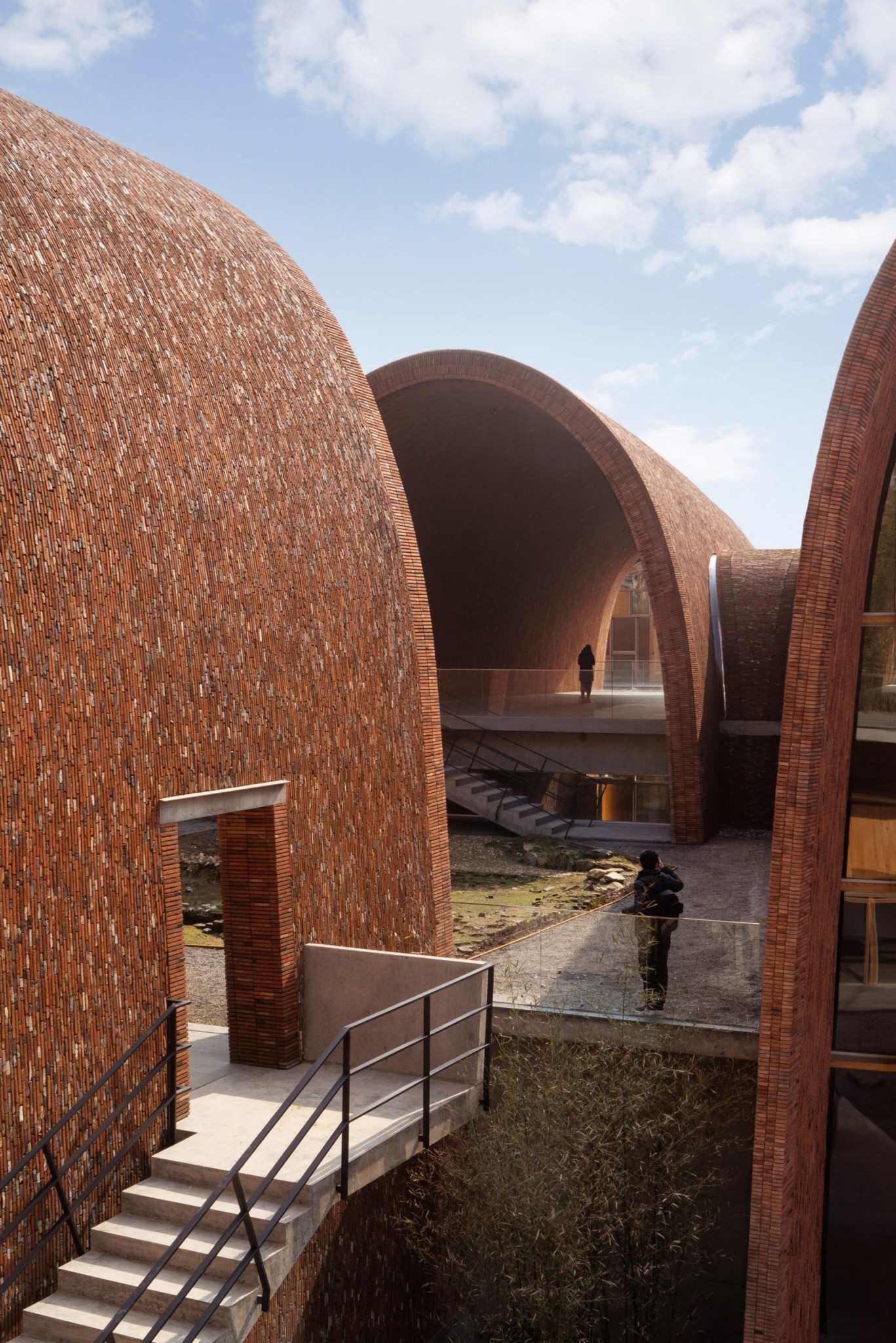
Jingdezhen Imperial Kiln Museum’s galleries were carefully positioned by Studio Zhu-Pei on site to accommodate the existing kiln ruins, some of which were discovered during construction.
They are partially sunken below ground to maximise the museum’s building height without imposing on surrounding buildings, while also creating an intimate, cave-like feeling inside.
景培鎮御窯博物館的畫廊是由朱Zhu工作室精心擺放的,以容納現有的窯遺址,其中一些是在施工過程中發現的。
它們部分埋在地下,以最大程度地增加博物館的建築高度,而又不影響周圍的建築物,同時還營造出一種類似於洞穴的親密感。
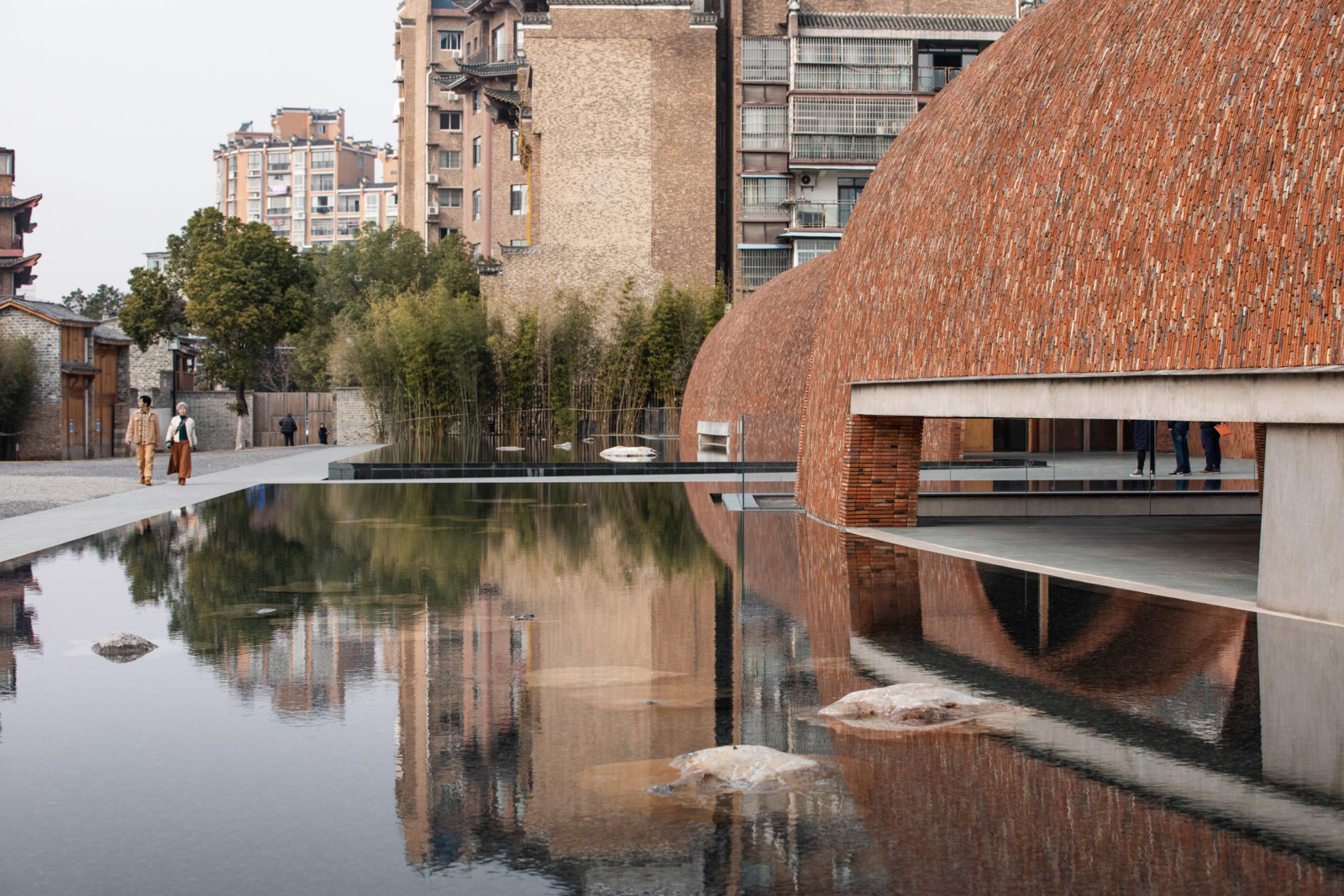
Around the structures, Studio Zhu-Pei has landscaped a series of public spaces, including a semi-open courtyard that is sheltered by one of the vaults and frames views of the ruins.
Sunken below street level, five quieter courtyards have been created with five different themes – gold, wood, water, fire and soil – which reference porcelain-making techniques.
在建築物周圍,朱佩工作室對一系列公共空間進行了景觀美化,包括一個半開放式庭院,該庭院被一個穹頂遮蔽,並構成廢墟的景象。
沉沒在街道下,五個安靜的庭院以黃金,木材,水,火和土壤這五個不同的主題被創造出來,這些主題都參照了瓷器的製作技術。
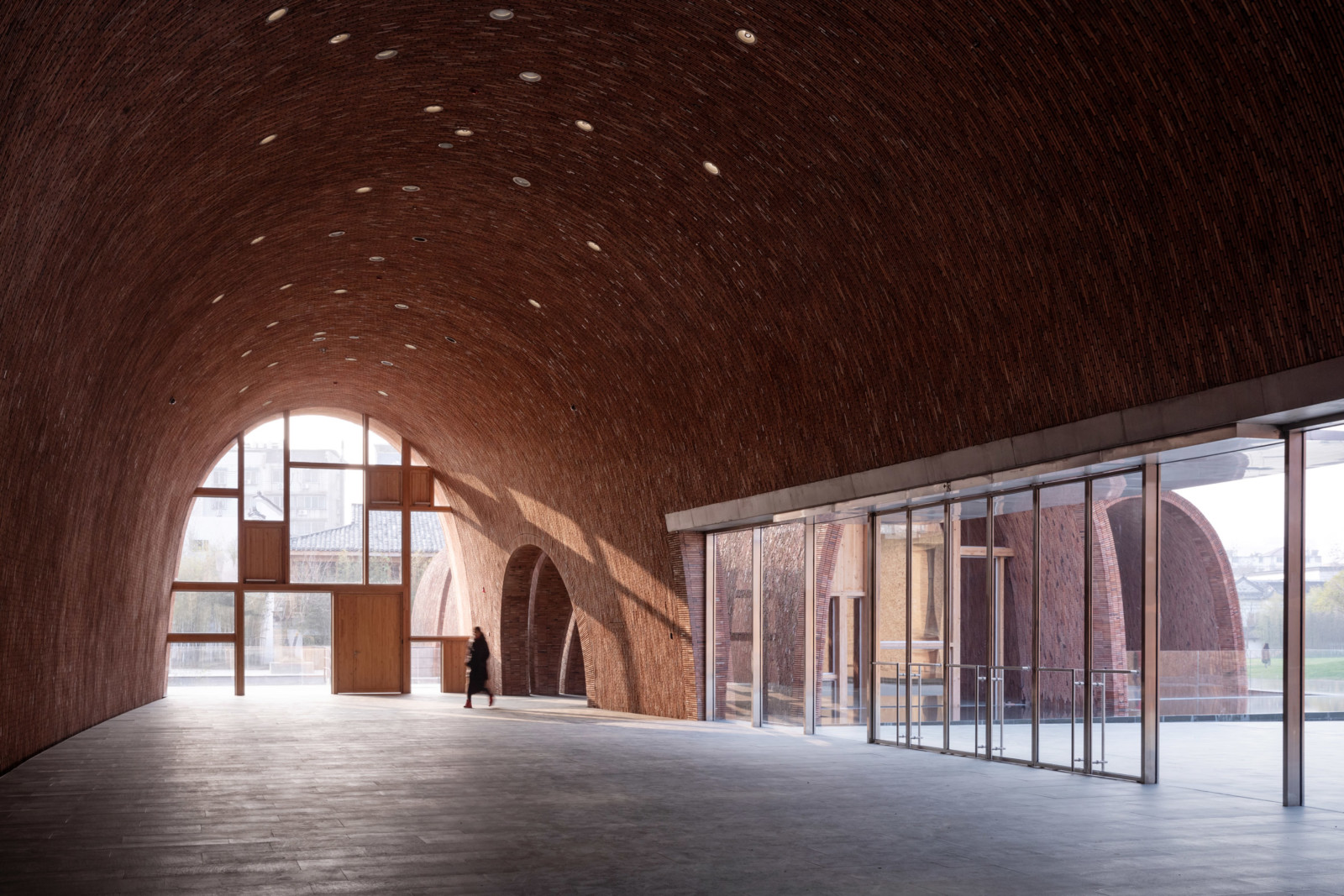
The museum’s vaults were built by hand by pouring concrete between two layers of brick. This mimics an old construction method used to make traditional kilns that negates the need for scaffolding and gives rise to thin, lightweight structures.
A mix of recycled bricks and new bricks were used for the project in order to reflect the local vernacular and many buildings in the city that are constructed from demolished kilns.
“Using recycled kiln bricks to build houses and all kinds of buildings is a significant character in Jingdezhen because brick kilns have to be demolished every two or three years in order to keep a certain thermal performance of the kilns,” the studio explained.
博物館的保險庫是通過在兩層磚之間澆築混凝土而手工建造的。 這模仿了用於製造傳統窯爐的舊建築方法,從而消除了對腳手架的需求,並產生了薄而輕的結構。
該項目使用了再生磚和新磚的混合物,以反映當地的土生土木和城市中許多由拆除後的窯爐建造的建築物。
該工作室解釋說:“在景德鎮,使用再生窯磚建造房屋和各種建築物是一個重要特徵,因為磚窯必須每兩到三年拆除一次,以保持窯的一定熱性能,”該工作室解釋說。
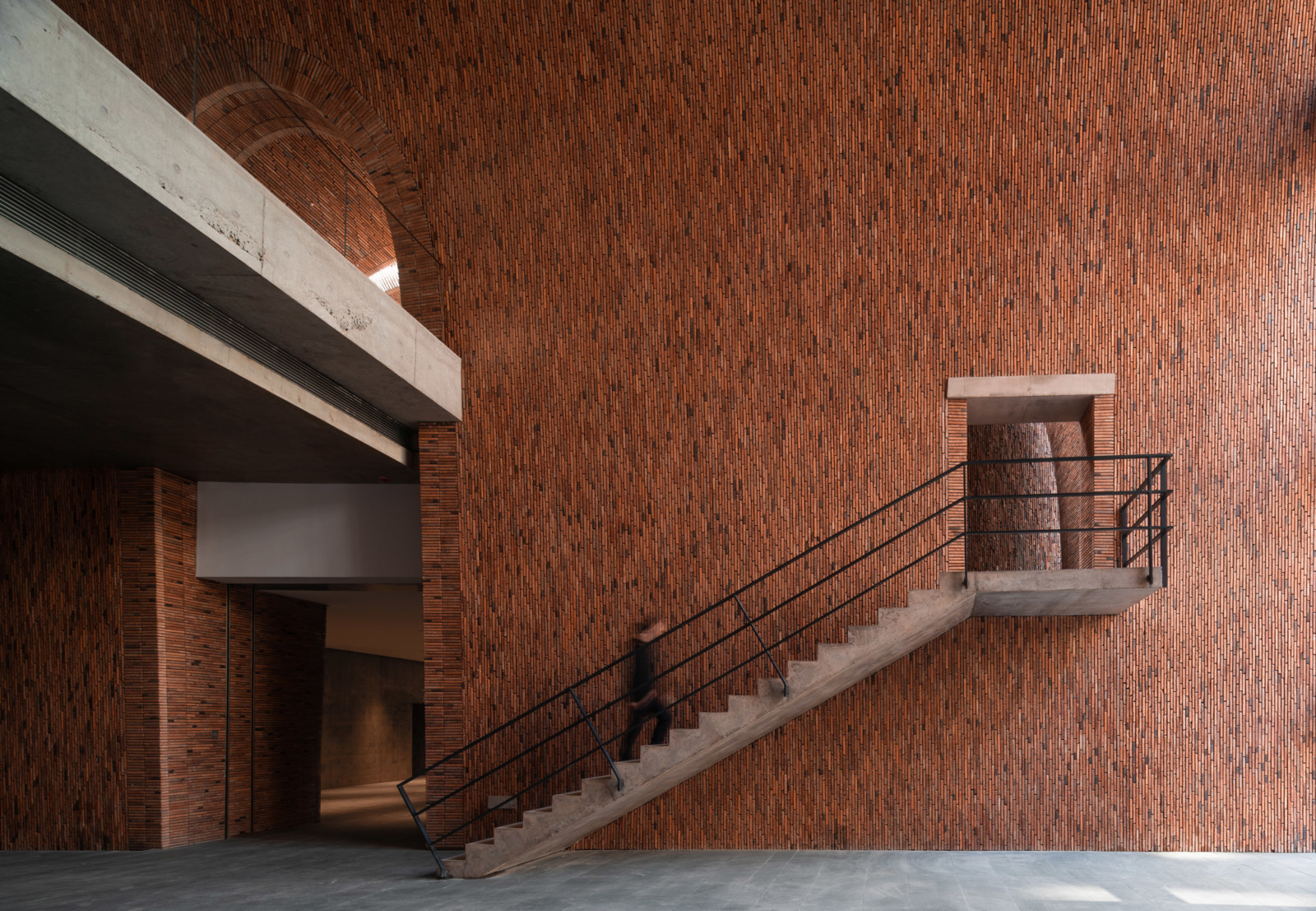
Jingdezhen Imperial Kiln Museum is entered through a foyer at ground level, housed within one of the arched structures.
This provides access to a bookstore, cafe, tea room and amphitheatre, and staircases down to the main exhibition spaces that housed underground.
Inside, the spaces are all lit by natural light as far as possible, with the ends of each arch left open or glazed. There are also cylindrical skylights that puncture the ceilings of the vaults, evoking smoke holes of old brick kilns.
景德鎮御窯博物館通過位於一棟拱形建築之一內的地面大廳進入。
這可以通往書店,咖啡廳,茶室和露天劇場,以及通往地下主要展覽空間的樓梯。
在內部,所有空間均盡可能採用自然光照明,每個拱形的末端均保持敞開或上光。 還有一些圓柱形天窗會刺破拱頂,引起舊磚窯的煙孔。
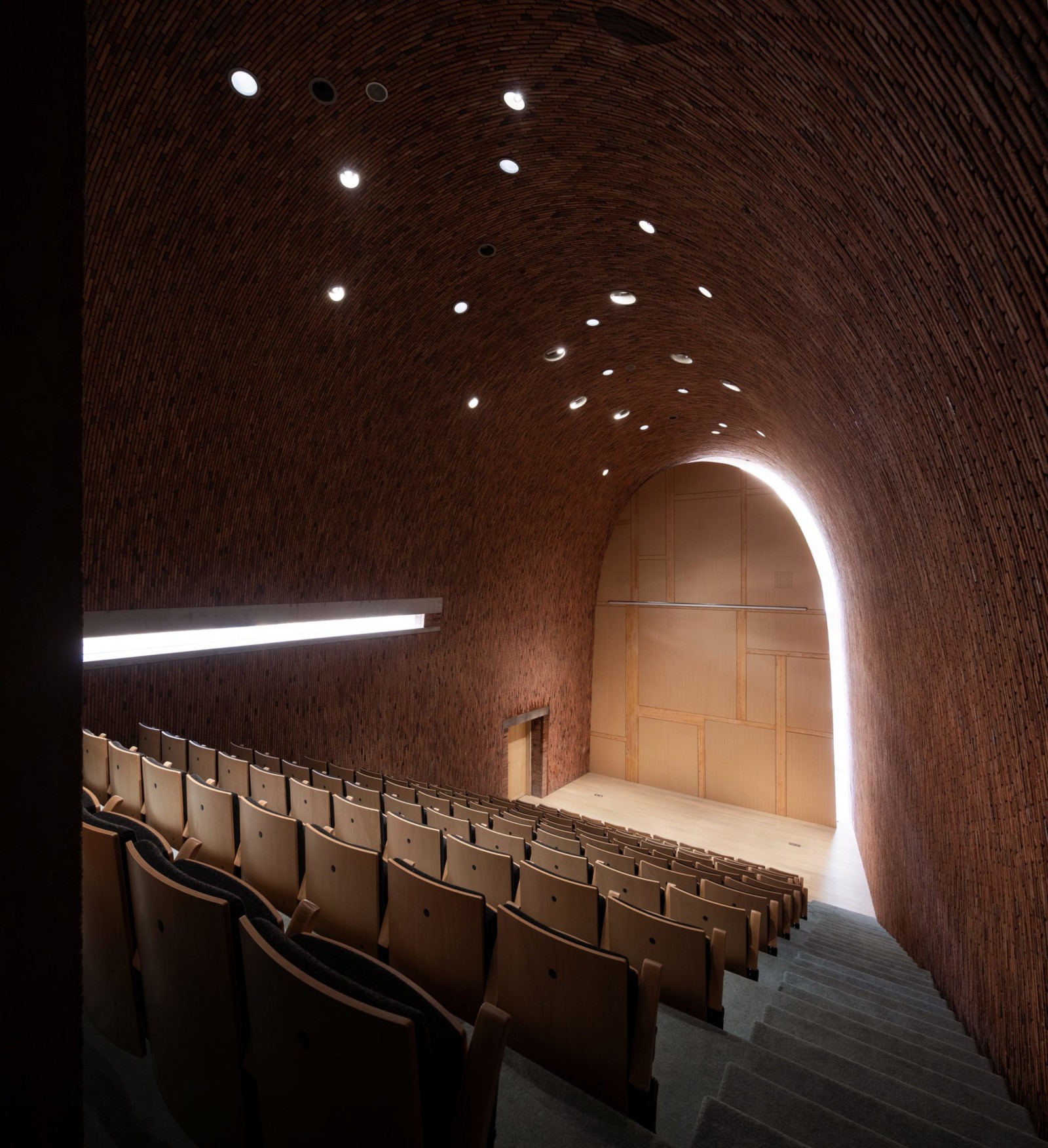
Studio Zhu-Pei is a Beijing architecture studio that was founded by Chinese architect Zhu Pe in 2005. It was formerly known as Studio Pei-Zhu. Other projects by the practice include the transformation of a factory into Minsheng Contemporary Art Museum, which has an entrance clad with a shiny skin of metal panels.
Elsewhere in China, Shenzhen Horizontal Design recently slotted a white-concrete gallery into the ruins of a brick house to create the Zhang Yan Cultural Museum in China and Powerhouse Company topped a reception building with an undulating walking trail.
Photography is by Studio Zhu-Pei, schranimage and Tian Fangfang.
朱培工作室(Studio Zhu-Pei)是一家北京建築工作室,由中國建築師朱培(Zhu Pe)在2005年成立。它的前身是Studio Pei-Zhu。 通過實踐,其他項目還包括將一家工廠改建為民生當代美術館,民生當代美術館的入口處覆蓋著一層閃亮的金屬面板。
在中國的其他地方,深圳水平設計公司最近將一個白色混凝土的畫廊放進了一座磚房的廢墟中,以創建中國的張岩文化博物館,而Powerhouse Company則在一條起伏不平的步行小徑上成為了接待大樓的頂端。
攝影是朱-工作室,schranimage和田芳芳的作品。
FROM:https://www.dezeen.com/2020/11/16/jingdezhen-imperial-kiln-museum-studio-zhu-pei-china/

